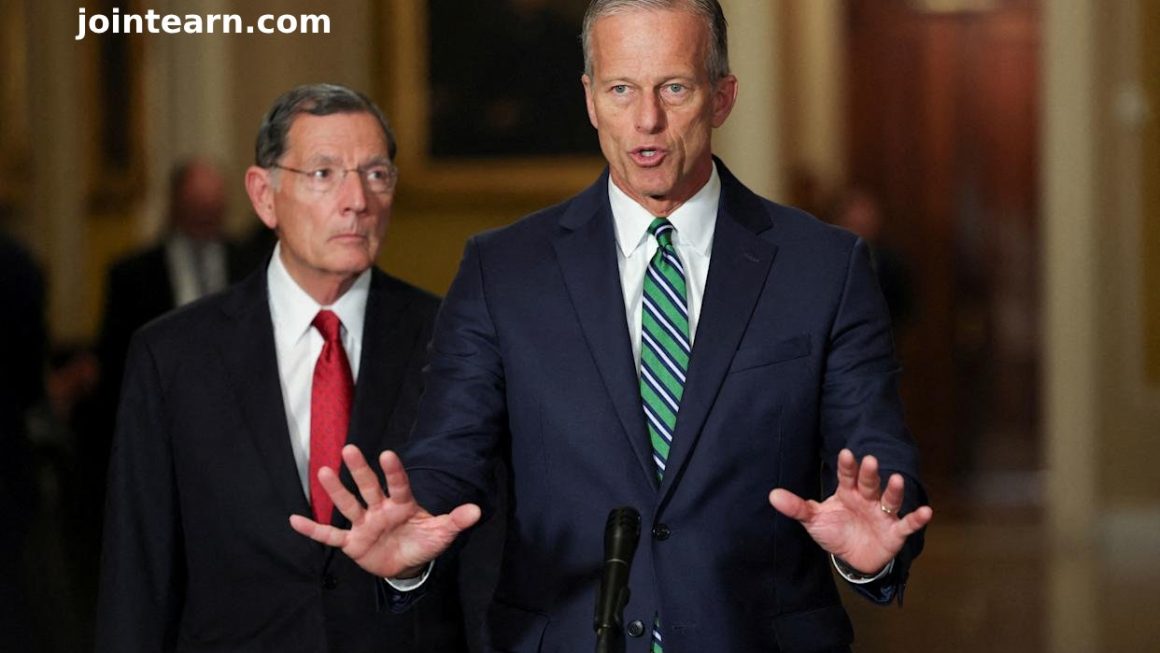The Trump administration is under growing bipartisan pressure to restore a public website that tracks how federal funding is allocated to various government agencies. Both Democrats and Republicans have raised concerns after the Office of Management and Budget (OMB) took down the online database, which lawmakers argue is required by law.
The Controversial Removal of the Website
The website, which previously provided transparency regarding federal funding distribution, was taken down by OMB earlier this year. This decision has triggered criticism from a broad spectrum of lawmakers, with Senate Appropriations Chair Susan Collins (R-Maine) stating that the removal of the site was a violation of the law. Collins emphasized that it is a legal requirement, not a discretionary decision for OMB.
Top appropriators from both parties in the House and Senate sent a letter to OMB Director Russell Vought, urging that the public access to the site be restored. The letter was signed by House Appropriations Chair Tom Cole (R-Okla.), Senate Appropriations Committee’s top Democrat Patty Murray (D-Wash.), and Representative Rosa DeLauro (D-Conn.).
The letter emphasized that the removal of the site goes against the statutory obligation for transparency in apportionment data and expressed hope that the issue would be resolved in accordance with the law.
Legal Arguments and Opposition
Advocates for government transparency, such as Citizens for Responsibility and Ethics in Washington (CREW) and the Protect Democracy Project, argue that the Trump administration’s decision to shut down the site violates the law. They point to legislation passed during the Biden administration, which mandates the OMB to maintain an automated system for posting apportionment data. This requirement, part of a 2022 funding deal, mandates that OMB operate and maintain the system for fiscal year 2023 and all subsequent years.
OMB, however, has defended its decision, stating that the site included sensitive, predecisional information that could threaten national security. In a letter sent to appropriators in March, Vought explained that the apportionment documents contain interim decisions based on current needs, which are frequently subject to change, and could reveal deliberative information that should not be made public.
Democratic lawmakers, including DeLauro, have countered this argument, asserting that apportionments are final agency actions and thus subject to the Freedom of Information Act. They also pointed out that the website did not contain sensitive information, as the law accounts for classified data separately.
Concerns Over Transparency and Accountability
The removal of the website has raised concerns that it could hinder transparency in the government’s funding process. Bobby Kogan, a former Senate budget aide, explained that the website’s apportionment data provided crucial insights into government spending, helping watchdogs and the public spot potential illegal fund freezes or impounding. Without it, tracking the activities of the Department of Government and Efficiency (DOGE) and other agencies could become more challenging.
In the lead-up to the removal, reports from Roll Call and Propublica highlighted that DOGE, an agency established under the Trump administration, was receiving significant funding to carry out a wide-reaching operation to shrink the size of government and reduce federal spending.
Criticism and Ongoing Investigations
The controversy surrounding the website’s takedown coincides with ongoing investigations into the Trump administration’s spending actions. The Government Accountability Office (GAO) is reportedly looking into the administration’s attempts to freeze federal funds, with dozens of investigations underway. This scrutiny has intensified as fiscal year 2026 appropriations hearings begin in Washington.
At a recent House appropriations hearing, Rep. Grace Meng (D-N.Y.) pressed FBI Director Kash Patel about the missing apportionment data. While Patel committed to making the FBI’s apportionment data publicly available, he did not provide a clear timeline for when that would occur.
What’s Next for the OMB and Transparency?
The OMB’s decision to remove the apportionments website has sparked widespread bipartisan criticism, raising questions about the Trump administration’s commitment to transparency and accountability. As investigations continue and hearings proceed, lawmakers are expected to push for the restoration of the site and ensure that apportionment data remains publicly accessible.












